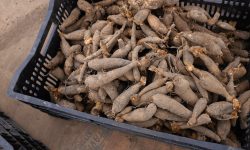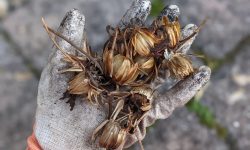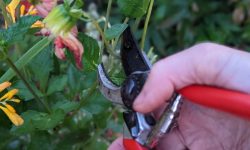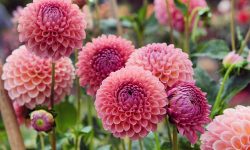Mums, or chrysanthemums, are beloved for their ability to bring rich, vibrant color to gardens and porches in the fall—just as most summer flowers begin to decline. Their bold hues and full, showy blooms make them a seasonal favorite across the United States, offering both beauty and resilience when other plants fade.
To achieve the most stunning and long-lasting display, however, proper timing is essential. Knowing when to plant mums—whether directly in garden beds or in containers—can make a major difference in how well they establish, how vibrant they bloom, and how long they last. In this guide, you’ll learn how the right timing, location, and variety choices can influence not only the appearance but also the longevity of your mums throughout the season.
Understanding the Growth Cycle of Mums
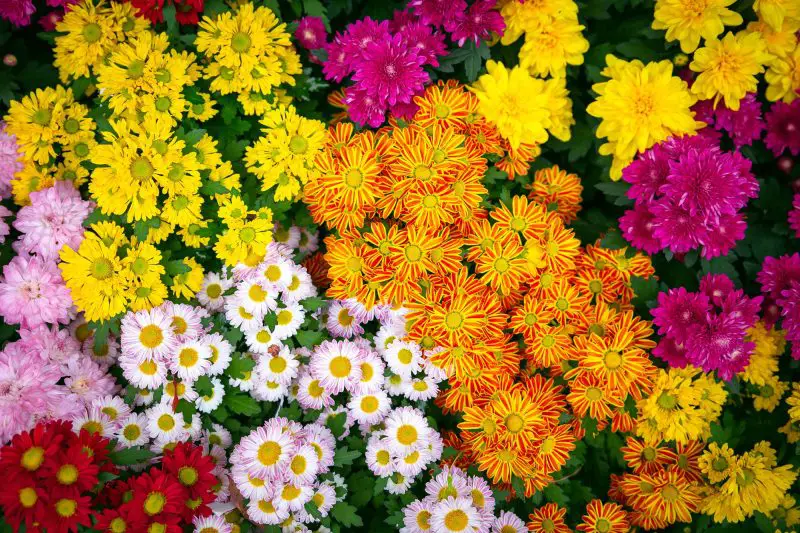
Mums are photoperiodic plants, meaning their bloom cycle is triggered by day length. As days become shorter in late summer and early fall, mums naturally begin to produce flower buds. However, this blooming behavior can be manipulated by planting at the right time and providing ideal conditions.
There are two main types of mums: garden mums (hardy) and florist mums (non-hardy). Garden mums are perennials in many regions and can return year after year with proper care, while florist mums are typically grown as annuals for short-term indoor or patio displays. Understanding the type of mum you’re growing is key to choosing the best planting time.
When to Plant Mums in the Garden
The Ideal Time for Spring Planting
For gardeners looking to establish mums as perennials, planting in spring is the most effective strategy. This gives the plants several months to establish a strong root system before the first frost. Well-rooted mums are more likely to survive winter and return with vigorous blooms the following season.
Spring planting also allows for better shaping through pinching, which encourages fuller, bushier growth. Pinching off early buds and leggy stems redirects the plant’s energy toward root development, laying the groundwork for dense flowering in the fall.
Late Summer and Fall Planting Considerations
While mums are widely sold in late summer and early fall, planting them at this time is primarily for immediate color rather than long-term success. Fall-planted mums may not have enough time to establish roots before cold weather sets in, especially in zones where frost arrives early. If you must plant mums in late summer or early fall, treat them as annuals unless you live in a mild climate.
To extend their blooming season in fall plantings, place mums in protected spots with full sun and cover them during unexpected cold snaps. Regular watering and mulching help buffer against sudden temperature drops and moisture fluctuations.
When to Plant Mums in Containers
Container-grown mums offer flexibility in placement, portability, and design, making them ideal for patios, porches, and urban gardens. However, timing their planting correctly is critical for achieving both visual impact and extended bloom duration. Unlike in-ground mums, container mums are more sensitive to environmental fluctuations, requiring precision in both planting time and aftercare.
Optimal Planting Window
The best time to plant mums in containers is late summer to early fall, typically from late August to mid-September, depending on your USDA hardiness zone. This timing allows plants to fully establish their root systems in the confined potting medium before cooler nighttime temperatures trigger blooming. Planting too early, such as in mid-summer, can lead to premature blooming under heat stress, which often results in leggy stems and shorter bloom duration. Conversely, planting too late in the season reduces root establishment and may lead to flowers that fail to open fully before the first frost.
Selecting the Right Container and Medium
Container selection affects not only aesthetics but also root development and bloom performance. Choose a container at least 12 inches in diameter and depth, with sufficient drainage holes to prevent waterlogging. Shallow or undersized pots dry out too quickly and may cause root binding, both of which can compromise bloom quality and frequency.
Use a high-quality, well-draining soilless mix that retains moisture but also offers aeration. A medium composed of peat moss, perlite, and composted bark in roughly equal parts is ideal. Avoid heavy garden soils or those that retain excessive moisture, as these can lead to root rot in closed systems like pots.
Acclimatization and Light Conditioning
If you’re purchasing greenhouse-grown mums, it’s important to harden them off before exposing them to full outdoor sun. Gradually increase their exposure over 5 to 7 days to prevent sun scorch and shock, which can disrupt the timing of flowering. Once fully acclimated, mums in containers should receive at least six hours of direct sunlight daily, preferably morning sun to reduce fungal risks.
Managing Root Zone Temperatures
Because container soil heats and cools faster than ground soil, mums grown in pots are more vulnerable to root zone fluctuations. On hot days, root temperatures in dark-colored containers can exceed 90°F (32°C), leading to heat stress and delayed bloom initiation. To mitigate this, place containers in areas with dappled afternoon shade or use ceramic or light-colored pots that reflect rather than absorb heat. During early fall, when nighttime temperatures drop, elevating the pots slightly using risers can improve airflow and reduce condensation buildup, helping the plants transition into flowering more evenly.
Fertilization and Moisture Control
Container mums require more frequent fertilization than in-ground counterparts due to nutrient leaching during watering. Begin feeding with a balanced, water-soluble fertilizer (such as 10-10-10 or 20-20-20) immediately after planting, then switch to a low-nitrogen, high-phosphorus blend once bud formation begins to promote flower development over foliage. Maintain consistent moisture—never allow the potting medium to completely dry out, especially during bud formation, as this can lead to bud abortion or undersized blooms. At the same time, avoid overwatering, which promotes root rot and fungal diseases.
By timing your planting to align with environmental conditions and bloom cycles, and by providing technical care tailored to the containerized setting, you can enjoy compact, lush, and long-lasting chrysanthemum displays well into late fall. Properly timed container planting not only maximizes aesthetics but also enhances plant health and extends the seasonal value of your mums.
Regional Timing for Planting Mums
Planting Times by USDA Hardiness Zones
Timing your mum planting based on USDA zones is essential for ensuring both bloom success and overwintering potential. In colder zones (5–6), spring planting is almost always necessary for survival. In zones 7 and above, early fall planting can still allow enough root establishment before the first freeze.
Southern growers in zones 8 and 9 can enjoy longer growing seasons and have more flexibility in planting times. However, extreme summer heat may require some shade during the hottest part of the day and extra attention to soil moisture.
Timing for Maximum Fall Color
To synchronize blooming with the peak of fall color, aim to plant early enough to allow a few months of growth and bud development. This typically means planting in late May to early July. Prune or pinch mums regularly through mid-July to encourage a full flush of buds in late September and October.
Plants that are started too late or never pinched may bloom early and fade by the time the fall season begins in earnest. Proper scheduling ensures you get bright, rich blooms when the weather is crisp and cool—the perfect fall backdrop.
Environmental Factors That Affect Bloom Timing
Preparing for Long-Lasting Blooms
FAQ About When to Plant Mums for Brighter Blooms
What month is best to plant mums for fall color?
The best time to plant mums for vibrant fall blooms is between late May and mid-July, depending on your climate. This timing gives plants adequate time to establish deep roots and develop strong vegetative growth before the blooming phase, which begins naturally as days shorten in late summer. Planting too late, especially in August or September, may not allow enough time for root development, especially in colder zones.
Can I plant mums in the fall and expect them to survive winter?
You can plant mums in the fall, but survivability depends on several technical factors: the time left before the first hard frost, the depth of root establishment, the hardiness zone, and the quality of soil drainage. In USDA Zones 7 and below, fall-planted mums often don’t survive winter because their roots don’t have enough time to acclimate. For overwintering success, plant hardy garden mums at least 6–8 weeks before the average first frost, in well-drained soil and mulch heavily after the ground begins to freeze.
Should I start mums from seed or purchase established plants?
While mums can technically be started from seed, it’s not recommended for home gardeners seeking predictable fall blooms. Mum seeds have low germination rates and require a long growing period (up to 4–5 months) to reach blooming size. Most gardeners purchase starter plugs or well-established nursery plants in spring or summer for reliability. Professional growers often use vegetative propagation to ensure genetic consistency and uniform flowering.
How do day length and light pollution affect bloom timing?
Mums are short-day photoperiodic plants, meaning they begin to form buds when nights reach a consistent length of about 11.5–12 hours of darkness. Artificial lighting—such as from porch lights, security lights, or street lamps—can disrupt their flowering signal by extending perceived day length. For accurate bloom timing, mums should be planted in locations where they receive uninterrupted darkness at night during the bud development phase, typically beginning in late August.
How can I delay or time mum blooms for a specific event or season?
Commercial growers use a process called photoperiodic manipulation to time mum blooming for holidays or events. Home gardeners can simulate this to a lesser degree by pinching or cutting back stems throughout the growing season to delay bud formation. Continue pinching until about July 15th in most regions. This encourages bushy growth and delays flowering until later in the fall. Avoid pinching past mid-July, or blooming may be delayed too long and result in fewer or underdeveloped flowers.
Is it better to plant mums in the ground or in containers?
Each method has pros and cons. In-ground planting provides insulation for roots and allows for perennial growth in hardy zones. It also supports deeper root systems that resist drought and temperature extremes better. Containers offer flexibility in placement and mobility, allowing you to protect plants from frost or excessive rain. However, containers dry out faster and provide less root insulation, which means they require more frequent watering and are less likely to survive winter outdoors unless brought indoors or heavily protected.
What kind of soil is best for planting mums?
Mums thrive in well-drained, loamy soil enriched with organic matter. The ideal pH range is between 6.2 and 6.7. Compacted or clay-heavy soils should be amended with compost or peat moss to improve aeration and drainage. Waterlogged soils contribute to root rot, especially in fall or when temperatures drop. For potted mums, use a high-quality container mix with added perlite or pine bark to increase porosity.
How deep should mums be planted?
When planting mums, ensure the root ball sits at the same level as it was in the nursery pot. Planting too deep can cause crown rot, while planting too shallow exposes roots to temperature fluctuations. For in-ground planting, loosen the surrounding soil to a depth of 10–12 inches and amend it with compost. Gently tease roots before placing the plant to encourage outward growth.
Can I plant mums indoors and then transplant them outdoors?
Yes, but timing and acclimation are critical. Start mums indoors from seed or cuttings in late winter or early spring. Once all danger of frost has passed, harden off the plants by gradually exposing them to outdoor conditions over a 7–10 day period. This process reduces transplant shock and helps mums adjust to real sunlight, temperature, and wind.
Why are my fall mums not blooming as expected?
The most common causes of poor blooming are insufficient sunlight, improper timing, and excess nitrogen in the soil. Mums need at least 6 hours of full sun per day to bloom. If they were planted too late or never pinched, they may bloom early and finish before fall. Excess nitrogen from lawn fertilizers can promote leafy growth but suppress bud formation. Switching to a phosphorus-rich fertilizer in late summer helps correct this.
Conclusion
Planting mums at the right time is the foundation for achieving vibrant, long-lasting blooms. Whether you choose to plant in spring for perennial growth or in late summer for seasonal color, success depends on understanding your climate, mum variety, and care routine. With thoughtful timing and proper maintenance, your mums can provide a brilliant burst of fall beauty that endures well into the season.


